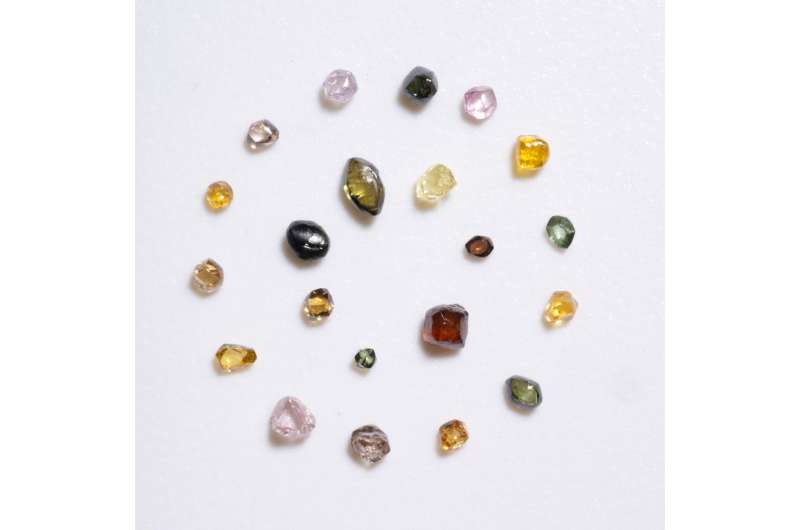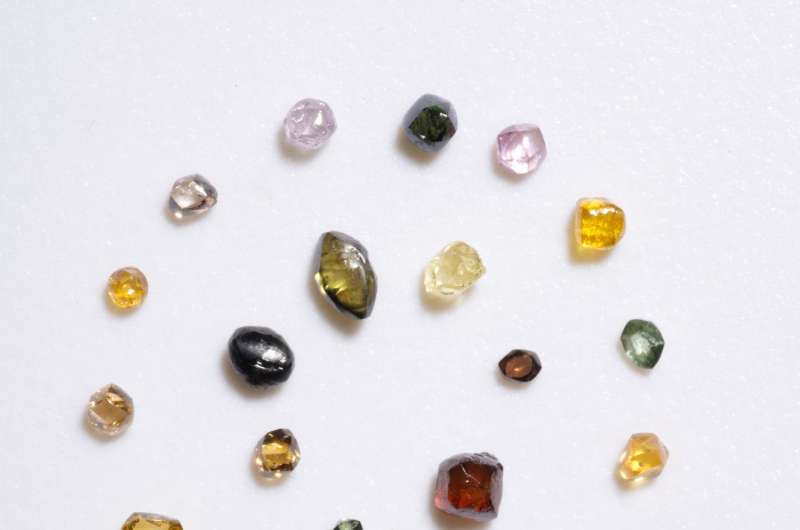Diamond collection brings deep Earth to the surface

Researchers at the Denver Museum of Nature & Science and University of British Columbia recently analyzed diamonds from the Museum's collection and learned how an unusual chunk of Africa formed.
It takes incredible heat and pressure to form a diamond. And when these diamonds were formed, microscopic minerals were trapped inside. The chemistry of these minerals, or inclusions, provides a rare look at the processes that led to the formation of Earth's crust. Inclusions found in the Museum's diamonds from the Congo craton in central southern Africa illustrate an incredible 3-billion-year journey through tectonic collisions and volcanic eruptions.
The international scientific team, led by author Charles W. Kosman, used an electron microprobe, an infrared spectrometer and a secondary ion mass spectrometer to analyze these diamonds.
"These diamonds are special," Kosman said. "They're the ultimate time capsules from deep Earth."
The researchers determined that the diamonds formed as thinner continental fragments and began their journey beneath the thick, buoyant continental crust of central Africa. Over 2.8 billion years, this part of the African continent repeatedly rammed into smaller and thinner fragments. These fragments slid downward back toward Earth's core where they were dehydrated by extreme heat and pressure, triggering the formation of diamonds. The diamonds were then brought to the surface in volatile eruptions, which pierced the hide of the ancient African continent and eventually deposited the diamonds on the surface.

"The circumstances that led to the formation of these diamonds trapping invaluable information inside are incredible," said James Hagadorn, Museum's curator of geology. "Grueling conditions - temperatures five times hotter than your oven, and pressure 10 times that found below Mount Everest—are what it takes to freeze clues to Earth's evolution for studies such as this one."
By knowing how and where diamonds like these are formed, it also informs the ability to predict where to find future diamond deposits. Museum collections are often overlooked as a resource for clues to Earth's delicate atmospheric history.
"Diamonds are a key part of our culture and industry. Not all diamonds end up on a ring or a saw-blade's edge. The ugly ones often have the coolest scientific stories to tell," said Hagadorn.
The results appear in the journal Lithos.
More information: Charles W. Kosman et al, Cretaceous mantle of the Congo craton: Evidence from mineral and fluid inclusions in Kasai alluvial diamonds, Lithos (2016). DOI: 10.1016/j.lithos.2016.07.004
Provided by Denver Museum of Nature & Science



















